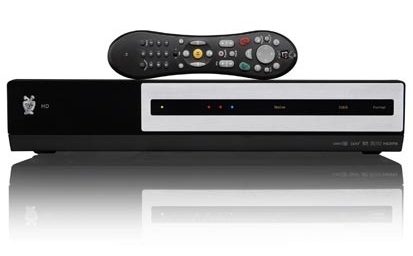TV Ratings Myths
Demographic information about TV viewers is worthless to advertisers.
Marty Kaplan reports that television executives have finally realized that the vaunted Nielsen ratings are largely worthless.
Networks set the price of ads on their shows using demographic information about the age and sex of those shows’ viewers. And the company that pretty much has a monopoly on furnishing those metrics is Nielsen.
So a few weeks ago, at the Marriott Marquis in New York, it must have felt like pitchfork time when a respected TV network figure in charge of analyzing ratings, CBS Corp. Chief Research Officer David Poltrack, told the Advertising Research Foundation’s annual convention that, um, age and sex don’t matter.
Poltrack put a positive spin on his stunning admission: Look! We’re working with Nielsen to come up with terrific new metrics that are way better than those lousy old demographics! But that cheery prospect may not have distracted the advertising and marketing executives in the room from ruing the hundreds of billions of dollars they’ve apparently thrown down the rat hole these past 35 years.
How lousy are age and sex for targeting ad buys? “Essentially invalid,” said Poltrack. “There is no link, none, between the age of the specified demographic delivery of the campaign and the sales generated by that campaign.” According to Ad Age, Nielsen executives at the convention reported that “ratings demographics by age and sex had a… 0.12 correlation with actual sales produced by exposure to TV ads, where 1.0 is complete correlation and 0 signals no relationship whatsoever.” Zero-point-one-two! You’d do better using a Ouija board than Nielsen demos.
It’s particularly ironic that this paradigm-popping confession came from CBS. From 1955 to 1976, before any network thought in terms of age cohorts, CBS “was the undisputed king of the ratings hill,” writes Neal Gabler in The Tyranny of 18 to 49:
“CBS’s ratings hold was impregnable, but only if one measured the whole audience. It was the genius of Leonard Goldenson, the head of ABC, which routinely finished in third place well behind CBS and NBC, to change the rules. Unable to compete in the big sweepstakes, Goldenson created a smaller one that he could win. ABC, he told advertisers, was getting younger viewers than CBS and NBC, which meant that advertisers with products appealing to that segment would be wise to buy time on ABC. That was akin to a football team saying that it had lost the game, but it had gained more yards…. The network had managed to make itself seem successful despite its consistent third-place finishes. It was all smoke and mirrors.”
From then on, the 18 to 49 cohort was the “coveted” demo, and it cost a premium to buy. Eighteen to 34 was even pricier. Older Americans? “Viewers over 55 haven’t factored into ad rates,” says theWall Street Journal, “which made them without value to the networks.” The numbers tell the story: A 30-second ad on Fox’s young-skewing Glee costs $47 per thousand viewers, while a spot on CBS’sThe Good Wife, 60% of whose audience is 55-plus, costs about half that.
But now the jig is up. “Reliance on the 18 to 49 demographic,” Ad Age reports Poltrack saying, “is hazardous to all media and marketers.” It may be just a coincidence that CBS, which these days runs about even with Fox in overall prime-time viewership, is now being killed by Fox in 18 to 49. But it’s no coincidence that 80 million baby boomers are aging out of the desirable demo. To sell air time to reach the fastest-growing part of its audience, the industry needs a new metric.
So exit demographics, and, just in time, enter psychographics. That audience-segmentation tool, which collects people into taste and behavior clusters, has been around for a while; if you want to try an online-era version, check out hunch.com. CBS and Nielsen, in what Poltrack calls a “historic move,” have now come up with six audience segments to sell to advertisers instead of age and sex cohorts: TV companions; media trendsetters; sports enthusiasts; program passionates; surfers and streamers; TV moderators. The developers of those segments claim that when ad agencies start buying spots on TV shows using these metrics instead of the ones that were fabulous until five minutes ago, there’ll actually be a relationship between seeing ads and buying products.
It can’t be any worse than what they’ve been using until now. If you talk to network executives privately, and to account managers at ad agencies, doubt about the utility of Nielsens is a poorly-kept secret. I’m not talking about weaknesses like undercounting racial and ethnic groups, and missing out-of-home viewing in airports and bars, and being clueless about online TV viewing, both legal and not. I mean the conspiracy of silence about the whole premise of demographics.
Why hasn’t anyone blown the whistle? Because the entire network-advertising-marketing-research village is in on it, and they’ve been afraid to burn the house down without some new roof to put over their heads. Poltrack’s salvo suggests that CBS and Nielsen are confident enough about what they’re touting now to admit that their old model was built of straw.
I suspect that this new metric won’t be nearly as useful as the “taste community” analytics still waiting to be born — a transnational audience analysis that mines all the rich new data available about socially-networked online entertainment consumption. But for that to happen, the Web analytics that currently pass for measuring engagement — hits, clicks, visits, visitors, pageviews, uniques, repeats and the rest — may also have to bite the dust.
Online media have a huge advantage over broadcast media, in that it’s much easier to collect user-specific data. Then again, the distinction between online and broadcast is fast disappearing. So, by the time Nielsen figures out how to deliver useful data, it’ll be moot.







As usually, it’s all about the boomers.
That link doesn’t seem to go to the article you’re quoting.
I’m not surprised. I’ve made the point before that it’s absurd to think it’s better to sell a can of Mountain Dew to a 14 year old than it is to sell a Mercedes to a 64 year old.
The notion was that a sale to a kid resulted in a life-long purchasing decision. Not just a single can of MD, but a lifetime. Therefore better to sell the 14 year-old today and ignore the old fart, even though the profit on a single Mercedes exceeds the profit on a hell of a lot of cans of soda. Nonsense. Brand loyalty disappeared with Brylcream and Oldsmobile.
Reaching the “utes” is a real problem. They grow up with an immunity to advertising. For them it is all peer-to-peer. And generally when companies try to manipulate peer-to-peer they get burned.
I’m doing a bit of this myself in app development, trying to figure out how to work sponsors into multimedia. I came up with a simple rule (which I doubt is my own invention.) My rule is that the sponsor doesn’t intrude or ask for anything, the sponsor always gives. A new game play, or an upgrade, given to you by Sponsor X. No commercial, no need to pay homage to the sponsor, no attempt to sneak it by as though no one will notice, just here you go, Sponsor X is buying you a new game.
In any case the idea of age cohorts as being somehow relevant goes back to school days. There it’s assumed that all 10 year-olds or 15 year-olds have similar abilities, knowledge, attention span and interests. It’s utter nonsense, always has been. You’ll notice that in the workplace age tends to be downgraded. No one cares whether the barrista is 21 or 31, the question is competence.
@ratufa: Fixed now.
I’m too lazy to look it up, but I’ve commented on at least a couple of occasions that the “key demographics” argument is wrong. Older people have more money. Younger people are fickle with their tastes and they’re likely to change over time.
However, I would argue that one of the main reasons that this myth has persisted is because it’s what content-producers wanted to believe. Namely, they wanted to make stuff that’s hip and cool and not stuff like Green Acres and Petticoat Junction. So they convinced themselves that while sure a lot of people watch old people shows, they don’t matter. What matters is the people that would want to watch the stuff that we want to make.
@Trumwill: There’s a lot of that. Artists want to make art, not mass market crap. There would be a whole lot more Disney-type movies and “Walker: Texas Ranger” shows if all they cared about was box office and ratings.
Isn’t that exactly why marketers would want to focus on young people who are persuadable?
Okay. But if you make Mountain Dew, then you’re not trying to sell a Mercedes; you’re trying to sell Mountain Dew. And it makes perfect sense that you’d want to put your ads on Glee instead of The Good Wife, since 14 year olds seem more likely to buy Mountain Dew than 64 year olds are.
I’m also trying to figure out how Joyner got to “Nielsen ratings are largely worthless” when the article is about the demographic info within Nielsen ratings. I don’t see where they’re saying that the overall number of viewers is worthless.
And really, a statement like “Viewers over 55 haven’t factored into ad rates, which made them without value to the networks.” just strikes me as wildly implausible. (for one thing, Kaplan somehow missed the fact that the WSJ quote started with the qualifying phrase “For the most part…” Not sure why Kaplan would leave that out unless he’s invested in making a point regardless of its validity.) How many ads for various prescription medications do we see on TV? Are these people trying to sell Cialis to 14 year olds? I think not. They want to reach an older population, so they’re going to put ads on shows that older people watch.
I find it very difficult to believe that a program that has high viewership amongst the 50+ crowd would be willing to sell their ads to Cialis and Mercedes based on how many 18-34s watch. That would be incredibly stupid. I can’t imagine that the networks were ever that dumb.
The main guy Kaplan quotes as dismissing demographics is Poltrack. And, gee, Poltrack is the guy pushing for the new psychographics. He’s the guy with everything to gain from people dismissing demographics and going to psychographics. So shouldn’t we take what he says with a grain of salt?
Take the Neil Gabler anecdote in the article and switch ABC for CBS. Then you’ll see what’s really going on here: smoke and mirrors. Except Goldenson’s plan actually made sense. Try telling the makers of Cialis that they’re fools for trying to sell their product to males over age 50, and that they should instead start selling to “program passionates” regardless of age or gender. See how that flies. Good luck.